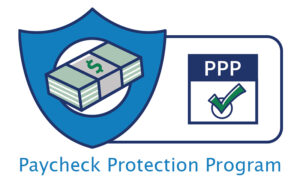
January 18, 2021
The Consolidated Appropriations Act, 2021 was signed into law on December 27, 2020. This spending bill provides $900 billion in stimulus relief for the COVID-19 pandemic, including $284 billion for the SBA’s Paycheck Protection Program (PPP) for new and previous borrowers under the Economic Aid Act.
- First Draw and Second Draw PPP Loans
First-time borrowers may apply for first draw PPP loans through March 31, 2021. Except for the additional eligible expenses highlighted below, the terms of these first draw loans are largely similar to previous rounds of PPP loans. Additional borrowers such as chambers of commerce and other business leagues, destination marketing organizations, and public broadcasters are now eligible for PPP loans. Music venues and theatres otherwise receiving aid under the Act, publicly traded companies, and companies with controlling interests held by members of Congress and certain members of the Executive Branch are not eligible. Borrowers who returned or repaid all or part of their PPP loan or did not accept the full approved amount may request a loan increase or reapply for the maximum amount if they have not yet received forgiveness for any part of their loan. The SBA is also emphasizing increased access to loans for minority, veteran, and women-owned businesses along with other underserved borrowers in low or moderate-income communities.
The Economic Aid Act provides for second draw PPP loans for previous eligible borrowers that used the full amount of their initial loan for authorized expenses. Borrowers may receive second draw loans of up $2 million and are generally subject to the same forgiveness terms as first draw loans. Second draw borrowers generally must employ 300 or fewer employees and have experienced at least a 25% reduction in gross receipts in any quarter in 2020 as compared to the same quarter in 2019. The SBA has broadly defined gross revenue to include all revenue in whatever form received or accrued and from whatever source, consistent with the borrower’s accounting practices. This includes gross revenue of any affiliated companies.
The SBA is allowing borrowers who were in business for all of 2019 to submit annual tax forms demonstrating a 25% reduction in revenue for all of 2020 compared to 2019. This is meant to benefit smaller borrowers who may not have quarterly revenue statements readily available. Forgiven PPP loans are not included in the calculation of gross receipts for 2020. In addition to borrowers that are ineligible for first draw PPP loans, organizations primarily engaged in lobbying activities or organized in the People’s Republic of China are also ineligible for second draw PPP loans.
- Changes to Loan Forgiveness
The Economic Aid Act has streamlined loan forgiveness for certain smaller PPP loans. Borrowers with loans of $150,000 or less may submit a signed certification identifying the number of employees retained because of the loan, the estimated amount of the loan spent on eligible payroll costs, and the total loan value, along with a statement that the certification is accurate and the borrower has complied with all PPP requirements.
Borrowers may now use PPP loan proceeds for additional eligible expenses. This includes costs associated with the following:
- business software or cloud computing services;
- property damage, vandalism, and looting caused by public disturbances in 2020 and not covered by insurance;
- business supplies essential to current operations at the time of purchase;
- worker protection expenditures related to maintenance of sanitation, social distancing, or other pandemic related safety standards for customers and employees.
Worker protection expenditures may include costs for drive-through facilities, physical barriers, ventilations systems, additional business space, health screening capabilities, or PPE. These changes do not apply to loans already forgiven before December 27, 2020. Sixty percent of PPP funds must still be used for payroll costs.
Borrowers may now select a covered period between 8 and 24 weeks in which expenses must be incurred in order to be eligible for forgiveness. The original CARES Act provided for an 8 week covered period and was amended to 24 weeks with certain borrowers receiving loans before June 5, 2020 given the option to select an 8 or 24 week covered period. Additionally, the proceeds of any EIDL advances will not be deducted from the amount eligible for forgiveness.
- Deductibility of PPP Expenses
Congress has confirmed that no amount will be included in gross income due to the forgiveness of indebtedness from a PPP loan. The Appropriations Act also states that “no deduction shall be denied, no tax attribute shall be reduced, and no basis increase shall be denied, by reason of the exclusion from gross income [of a forgiven PPP loan].” This provision applies retroactively to all tax years ending after the enactment of the CARES Act and includes both prior and subsequent PPP loans. This overrides previous IRS guidance denying a deduction for any business expense paid with forgiven PPP loan proceeds.
Michael L. Iannitti’s primary practice areas include commercial transactions, business planning, and corporate governance. He represents clients in all stages of business development, from selection and formation of new business entities, to the purchase and sale of local businesses, to succession planning. His accounting background imparts a unique understanding of his clients’ business objectives and financial considerations. Michael also provides guidance on tax planning and compliance for individuals, trusts, and businesses and has evaluated the tax implications of various business transactions and asset protection strategies. He can be reached at 513-629-9498 at mliannitti@strausstroy.com.

